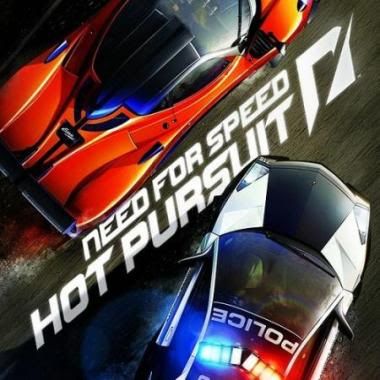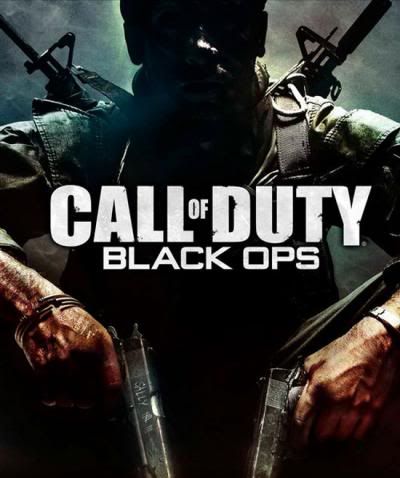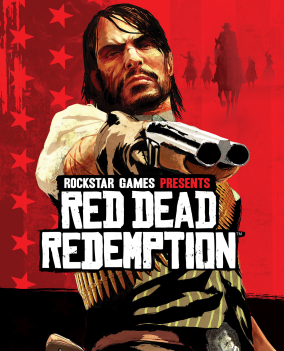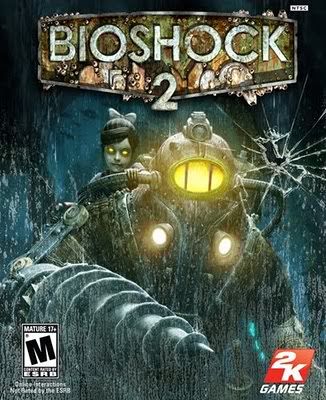
FailboatSkipper's Game Reviews
Monday 7 February 2011
Need for Speed: Hot Pursuit

Monday 20 December 2010
Assassin's Creed: Brotherhood

Sunday 12 December 2010
Call of Duty: Black Ops

Monday 18 October 2010
Halo: Reach

9 years later, and Bungie have brought the main Halo saga to a close. Considering their previous offerings have been met with greatly mixed opinions (especially on the subjects of Halo 2 and ODST) it's interesting to see how this final episode gives the series a new direction just before it is passed over to Microsoft's 343 Industries. Taking place during an important event in a loved universe and Halo 3 being a tough predecessor to beat, Reach needs to be the best it can be if the Bungie-bred titles are to be given a fond farewell.
As the title suggests, the context of the story is the fall of Reach, one of the final human colony planets. As shown in the beginning of Combat Evolved and the novel written by Eric Nylund, it depicts the 'glassing' of hundreds of cities and the tragic end to the Spartan warriors. The player is put into the shoes, armour and helmet of Noble Six, a newbie to the Noble squad. As fate decides, this squad is destined to be the last of all the Spartan squads, and to see the demise of the planet first-hand. The scale of this is, as expected, considerably larger than Halo 3 and instead of taking part in a multitude of one-man-army skirmishes, you are on the UNSC frontline and will see armies clash around you as you fight towards your objectives. You also won't just be going on a tour of the same battlefield either; as the campaign takes the squad from ruined cities to icy caverns and, most spectacularly, into space in a a death-defying mission to save what could be humanity's last hope (and something Halo players will be very familiar with). Each mission is recognisable in its own right and consistently action-packed.
While this all looks great as a shooter, it still struggles at times with Halo 3's fairly clumsy story-telling; too many characters saying too little leaves the player with little sympathy for each of the squad's members, and this somewhat hinders the impact of their inevitable demise. It's no easy feat to make a successful action-adventure in which there is no ultimate victory, but in such a familiar franchise it was a great opportunity to pull at players' heartstrings and for me it didn't nearly deliver.
To fit with the more matured tone of the game, the visuals of the game have had their biggest overhaul since the series' beginning. The colour palette has fewer blues, purples and reds and instead has darker, richer tones. Environments are not bright and lively but are moodier and foreboding, with thunderous skies hanging above scorched earth. The look of the weapons has vastly changed; the classic assault rifle has a much sharper and more visceral appearance, and the Battle Rifle replacement, the DMR, kicks violently in your hands as it fires. Many of these visual additions are thanks to the new graphical engine that Bungie has built, and for the most part it is a welcome change, but it is not without its problems. During the campaign, and occasionally in Firefight, I had some of the worst framerate issues I've seen in a video game, and some moments in real-time cutscenes were everything would slow down and blur horribly. This is certainly not intentional, and I have seen it on other copies of the game. It looks so bad in these moments that I find it astounding that Bungie released the game with such a glaringly obvious graphical flaw.
With all this aside, it's known that with Halo most people come for the campaign but stay for the multiplayer. Of course, as it follows the same basic staple as the other games' staple, it's hard for Reach's multiplayer to disappoint. In fact, not only does Reach keep the same formula fans have come to know and love but also adds to the mix with various new objective gametypes such as Headhunter, a skull-gathering match which requires risk-taking as well as skill, and Invasion, a Bad Company-like game of pushing the defending enemies back in stages, pitting Spartans vs Elites. The intensity and competitiveness is still just as high, and with a whole host of new medals and awards you'll always feel rewarded for your hard work on the field. The old, complex ranking system is gone (to my dismay) and is replaced with a basic exp-collecting system, but with a twist - these experience points are 'credits' and can be used to buy armour pieces for your Spartan, which is now far more customisable. This is a very personal multiplayer experience and one that will certainly please the hardcore and dedicated, but my one gripe was the selection of maps. In total, there are 9 maps packaged with the game. Two of these were remakes from Halo 1 and 2, two of them are only available in Invasion, and almost all of them were taken exactly out of campaign missions. One map, the gigantic 'Forge World' has been split up into various smaller maps, but regardless of this I was greatly disappointed that there wasn't the variety nor the individuality that Halo 3 had with its maps.
Bungie keep in Halo 3's standard, however, with packaging even more than just campaign and multiplayer. Forge and Theater are still superb additions, especially with the new super-map Forge World inviting endless creativity. Firefight has also been added, carrying from ODST, and remains one of the finest wave modes seen amongst the many that have sprouted up since Gears of War 2's Horde mode. Finishing the list is the Custom Game option, and even more (yes, more) options have been added to fully customise your private game experience.
Halo 3, for me, was a timeless classic and I had some of my greatest times gaming on it and I knew from the start Reach wouldn't quite beat it for me. However, despite there being small things that put me off from saying this is the finest of the entire series, Halo: Reach is nonetheless a fine addition to the Xbox 360's biggest franchise, and one that will be more than enough to satisfy fans of the Halo universe. Thankyou, Bungie, for all your hard work. 8/10
Thursday 5 August 2010
Bioshock 2
Though it surprises me to this day, Bioshock 1 simply did not call out to me. Sure, I was deeply impressed with the game's dynamic opening and its original setting, but frankly it didn't take long until the die-and-die-again gameplay frustrated me. Upon hearing that Bioshock 2 was a 'more of the same' sequel, my hopes weren't exactly high.
Indeed, the first hour or two of Bioshock 2 hardly prove this view wrong. After a short and somewhat baffling introduction in which the protagonist shoots himself in the head, the player wakes up in Rapture and the adventure begins. This is perhaps where the game does lacks most; the awe of entering this dying, mysterious world that one gets at the beginning of the predecessor was the perfect start. Now, Rapture is nothing new; instead you're already there and expected to just get on with it. The storyline isn't as inventive either, instead of exploring good and evil, human worth and self-identity as the first did, it's now simply a struggle to save your daughter from your psychotic wife. Granted, there are emotional moments along the way, but it disappoints that 2K Games couldn't be a little more creative with the plot.
Given a little more time, however, and I found to my relief that combat is no longer such a constant losing battle. Did I mention that you play as a Big Daddy? As an anomaly to the usual Big Daddy experiments, you're not entirely programmed to follow and protect Little Sisters, you have a mind of your own, not to mention your right hand has a giant drill attached. Fear not, you won't be lumbering round like an 8-foot tall snail; you are an earlier model which makes up for a lack of titanic strength with the agility of any other human. The main difference I noticed in the balancing of the combat was that enemies are slightly fewer in number and do a little less damage. Personally, being killed and instantly being revived in a Vita-chamber rather than going back to a checkpoint really irritates me as it feels like a cheap tactic, and thankfully there was a lot less dying this time around.
Most impressive about the revamp is certainly the sheer number of plasmids and tonics. There is now about 30 different plasmids on offer, many with two or three upgradeable forms, and a selection of tonics that is two or three times the size of the previous game's. Weapons are also an improvement. Forget ordinary human weapons - the pistol is replaced with a Rivet Gun, the Tommy gun with a triple-barreled .50 calibre turret, the wrench with the mighty drill (a personal favourite). These are only the first three weapons you'll obtain, there are several others and of course all weapons can be customized, use different ammo types and upgraded to one's preference. There isn't a large host of new enemy types, but considering the more exciting armoury of weapons and plasmids at your disposal, combat never gets old.
As the hours went on, I was pleasantly surprised to see that the game did get better and better. The storyline doesn't exactly improve, but as well as collecting more weapons and exploring new areas, there are interesting extra mechanics that spice up the pacing of the game. One of these is the underwater sections. Being in a Big Daddy suit, you're able to go to Rapture's exterior and walk the seabed at certain parts. There's zero fighting on these mini-missions, just the eerie silence in stark contrast to the hell indoors, broken only by your heavy breathing inside the helmet, and the deep thuds of your weighted boots on the ocean floor. These sections (ironically) give a breath of fresh air to the gameplay and keep the pacing in check. Another major new element is the addition of the 'adopt' choice when it comes to Little Sisters; they will guide you to a fresh body to extract Adam from, and once you're done defending her while she works, you'll be able to spend this Adam at the nearest shop on plasmids and tonics. Careful though, mess with the Little Sisters too much and you're inviting the wrath of the Big Sister, whose chilling approach leading to a frantic and desperate battle will not be easily forgotten.
The single player story will take on average about ten hours, and this time around 2K have decided to include a multiplayer mode. Just about every player had their doubts about this move, and it seems this time they were quite right to doubt. While you play as a perfectly nimble human with sensible, balanced weapons, Bioshock simply isn't a game made for multiplayer. The maps aren't exactly tactics-based, and despite a good selection of game types most matches will descend into an inevitable mosh-pit of fire and electricity plasmids flying about with little room for skilful play. Adding to this is the Big Daddy upgrade which can be grabbed by whoever happens to be nearby when it spawns, leading to one player being a near-unstoppable tank for a couple of minutes, without any real weakness. If you're looking for a few games of laughs and madness, Bioshock 2's multiplayer does the trick, but this won't be your next big online addiction.
Bioshock 2, this time around, seems to have done well on what the first game didn't, but unfortunately missed out on what the first game did. Story and atmosphere have seemingly been replaced with improved gameplay, and so it's hard to say if it has really succeeded as a sequel or not. If you, like me, felt overly bogged down in Bioshock 1 by endless hordes of Splicers, then you'll be getting your gleeful revenge in this installment. However, players wanting another great narrative in a wholly new environment that will amaze you all over again will be disappointed - this is the same old Rapture again, albeit with a few new toys to play with. 7/10.
Sunday 11 July 2010
Red Dead Redemption

Sunday 27 June 2010
Splinter Cell: Conviction

I remember many moons ago getting my Playstation 2 for my birthday, and waking up extra early on the day to play the first game I had for it: Splinter Cell. I was amazed at the depth of the stealth action which required serious thought and planning for every situation, but a few sequels down the line and I had a growing distaste for the series which was going stale. However, this game seemed to signify a turnaround for the style of the Splinter Cell games, and I was intrigued.
What I was perhaps most happy about Conviction was it doing justice to the storyline of the games. The game definitely appears to have made some turns more towards a third-person shooter but it does not lose its emotional edge by reminding the player what Sam is fighting for: the discovery of his daughter's fate and the corruption of his former agency. The story and script is very well written, including one major twist which may have been a little predictable but was certainly well-presented. Speaking of presentation, the visuals of the game are a particularly strong area. Ubisoft have managed to completely overthrow the generic HUD when updating your objectives, and instead of giving you a box of text to read, throw your instructions on huge letters on whatever wall or vertical surface is nearby. This not only stops you removing your eyes from the action to read out of a rectangle at the bottom of the screen but is also effective in describing Fisher's thought processes. Sometimes a short animation will be shown, or as seen in one particularly emotional cutscene, words will fly around the room describing his mix of feelings. A matching technique to this in contemporary games is yet to be seen.
Gameplay is, however, what I was most apprehensive about as I was worried that the game would become a mundane stop-and-pop, using Sam's rage as a justification for a mindless shooter. Fortunately, this was not the case, as not only is stealth brilliantly constructed, but it's also an option. Sam's gunning hand isn't quite so slow and clumsy now and with a Gears of War-beating cover system you now can choose, at the cost of the game becoming significantly harder, to shoot your way through a situation. A hefty armory of weapons can be collected and customized to your preferences, using points earned by various in-game challenges. To add to the already solid combat, you can do all that Sam has always been able to do: climb walls, hang from pipes and sneak through shadows, which are all well-polished and keep the action fluid. While I was impressed by the exciting range of environments during the single-player campaign, it certainly suffered from the usual problem in most of this generation's games - it was short, and it was easy. When I say easy, I mean I could finish it on the hardest difficulty on my first playthrough, within 7 hours. I would suggest expecting the game to be more of a experience than a challenge.
The multiplayer is what is left after the campaign, unless you're dedicated enough to complete all the campaign challenges (which are, to be fair, a lot of fun), and it seems this is rather hit-and-miss. Four gametypes are available, and personally I found the selection to be quantity over quality. Last Stand is the now all-too-common wave mode, fighting off endless enemies in a small space until inevitable defeat, and it is probably the most dull of the selection. The other three are based on a fully-fledged co-operative campaign, Hunter being an ordinary playthrough of the campaign with another player, Face-Off in which two agents compete for the most kills in one certain area - including killing each other- and Infiltration which must be unlocked via Uplay, in which you must sneak through a mission without being spotted. While you are not short of things to do in this area, with another full set of challenges and upgrades, I tended to tire of it within an hour or two as it missed the certain drive of the campaign's characters and storyline, and became a shell of the real game. However, stealth fans who look more for the action than they do the narrative will not find a better title than this.
I found Splinter Cell Conviction a pleasant reassurance that the franchise is not dead. It has a great story and art style, a much-needed gameplay revamp and, if you enjoy it, a fine set of co-operative activities as well. Providing you have patience and someone to play with, this is worth your time and money. 8/10.
